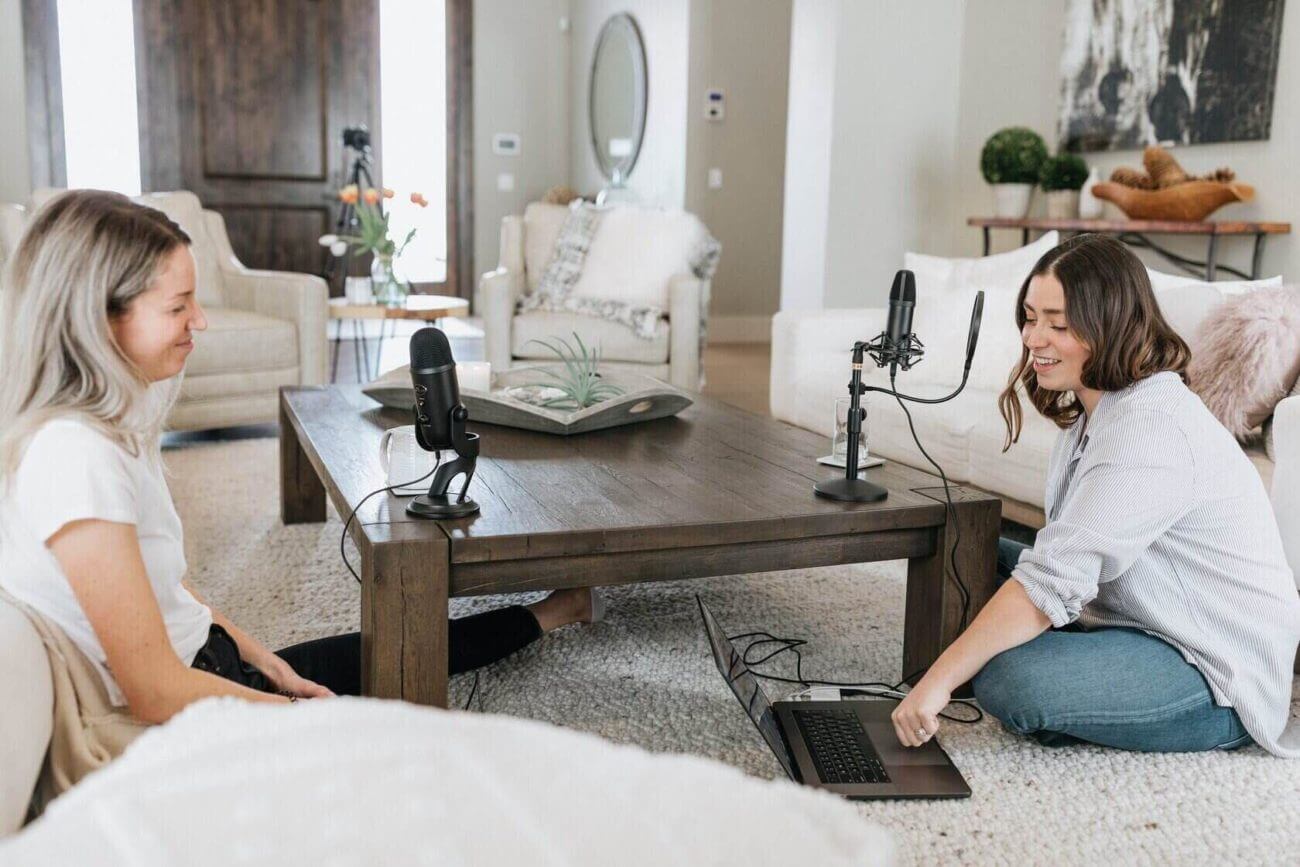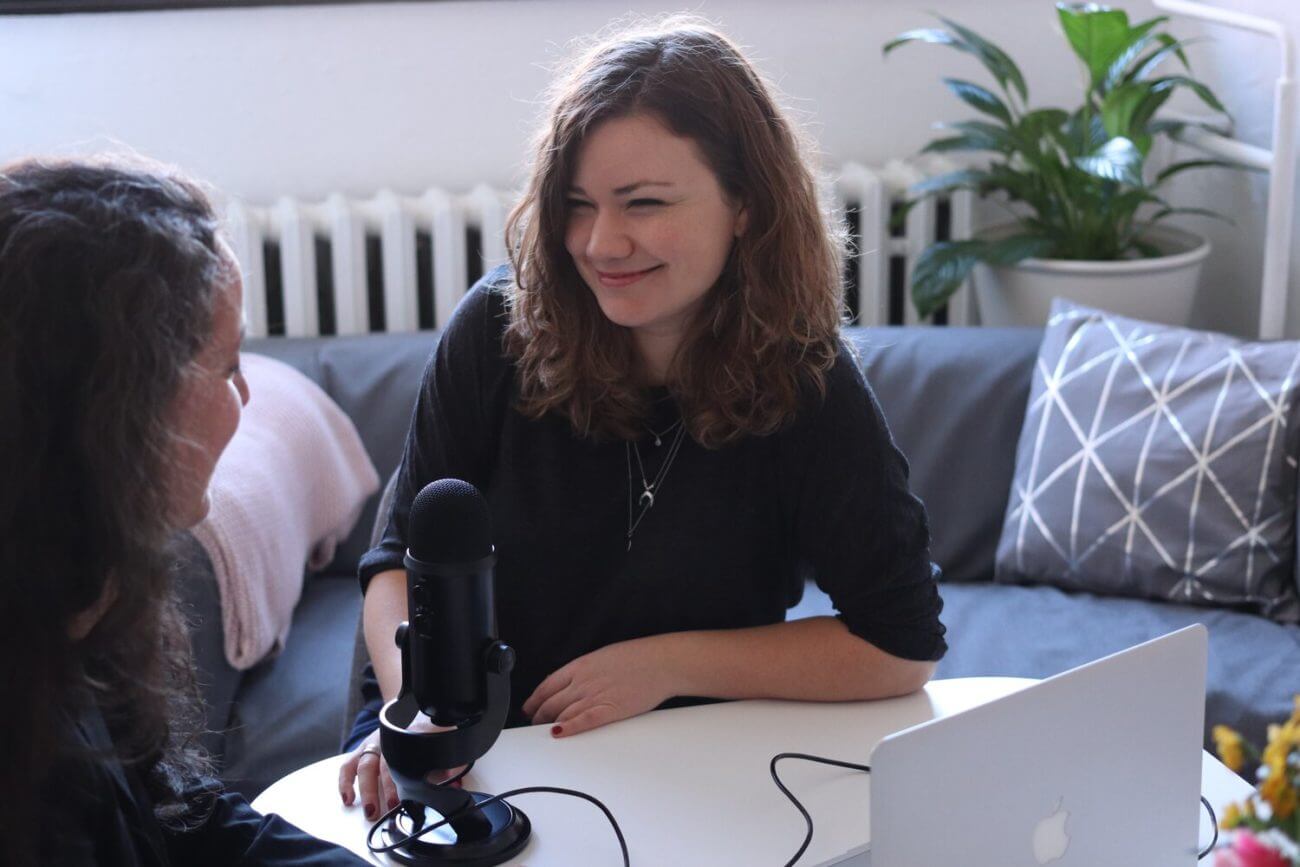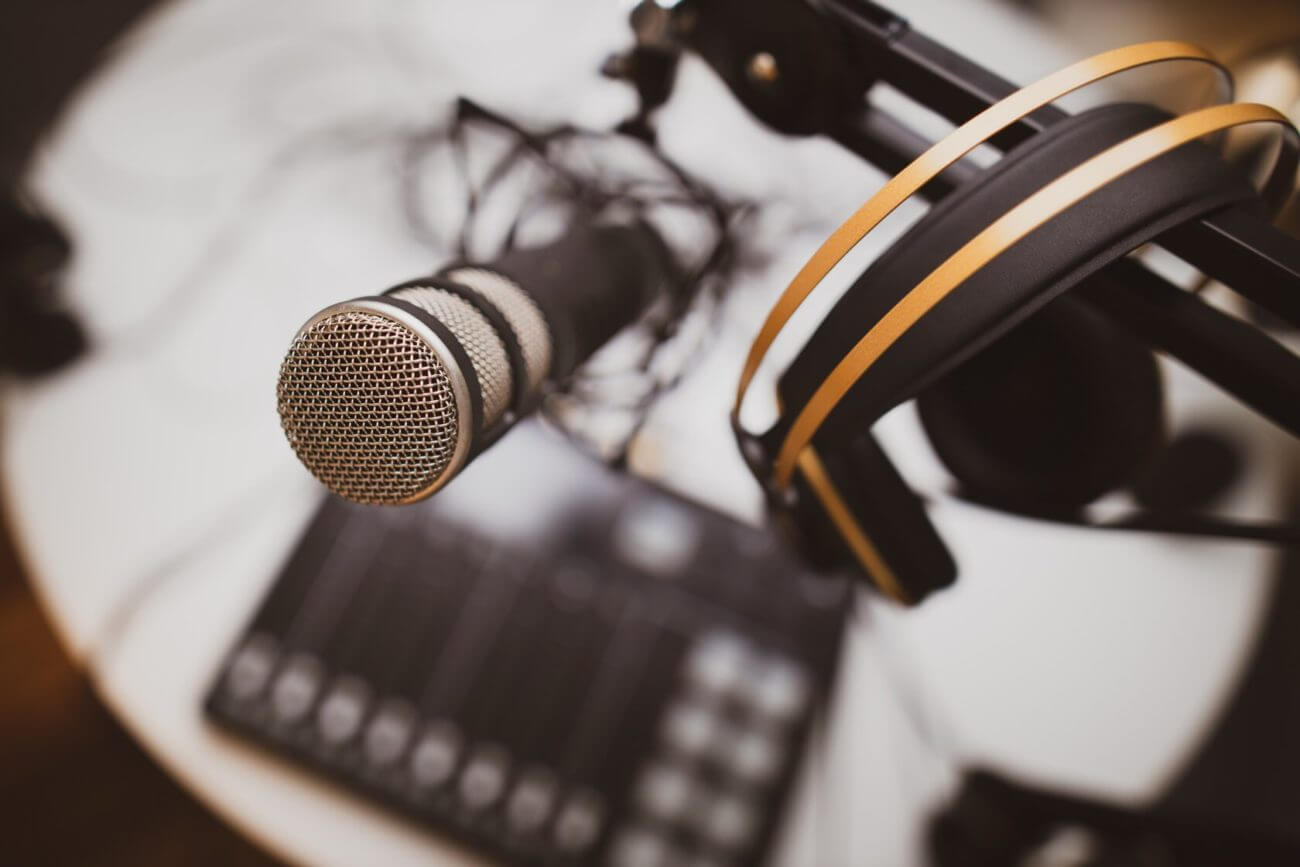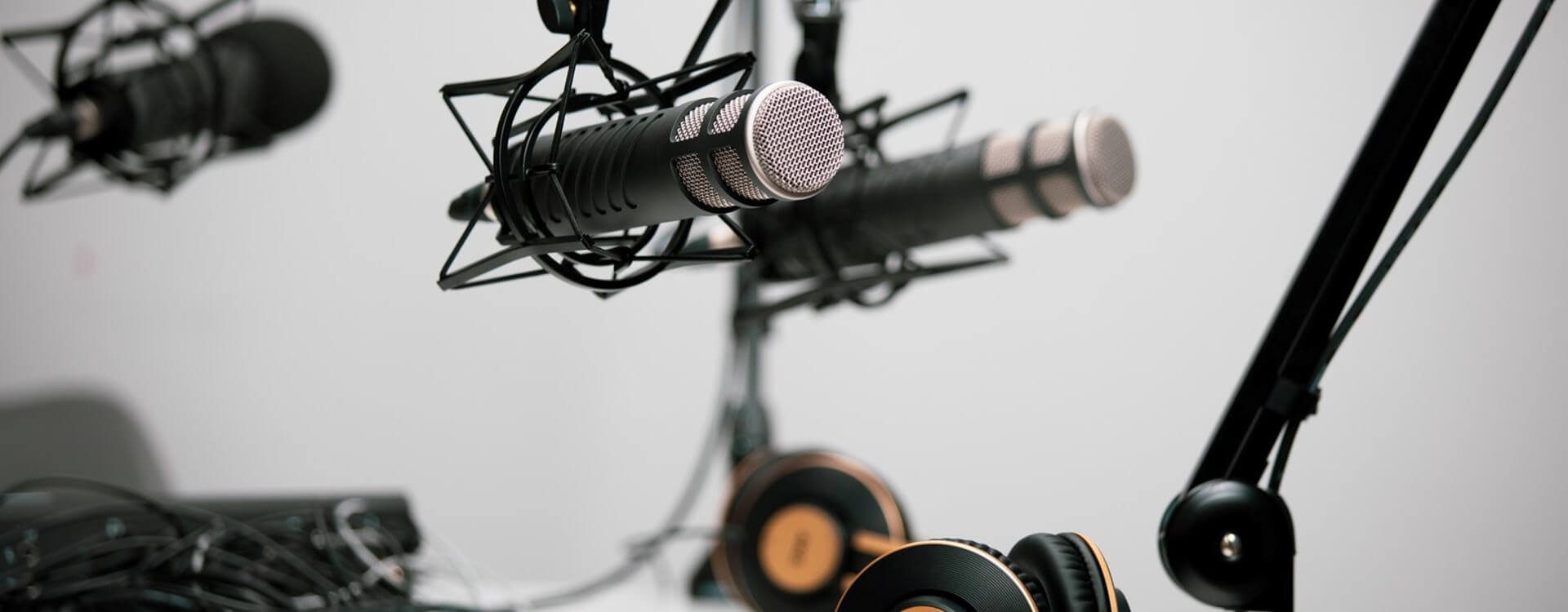Highlights
Table of Contents
Explore article topics
You’ve got a podcast or you’re thinking of launching a podcast and you’ve already picked the essential gear for starting a podcast, but you’re wondering how to choose music and sound effects for the episodes. This is a common question among new and aspiring podcasters. The good thing is that you’ve probably already heard a lot of music on podcasts and perhaps even understand where and when music enhances an episode.
Below, we’re going to look at where and when a podcast needs music and sound effects. To do this, we’ll look at the structure of a typical podcast and discuss the right moments to deploy these sounds.
Some of podcasting’s musical and sound effects cues have their origins in radio broadcasts of the 20th century and even films. Other cues are more typical of the last few years of podcasting culture. We’ll get into what works best and why so that as you enhance your new broadcast or launch your first one, you will have a better sense of the world of podcast sound effects and music.
Podcast structure

Generally speaking, the podcast structure is not too different from movies and radio broadcasts, which were influenced by the three-act structure of plays. Like those formats, podcasts basically have three acts.
The first part, the Intro, begins with pre-recorded theme music and a summary that describes the podcast. The intro also obviously introduces the episode’s story or topic.
In a true-crime podcast, for instance, the intro features the background of the story. Podcasters can play around with the timeline of a true crime story within the intro, like starting the story in the present, which could be twenty years after some mysterious crime, or they could start it right at the moment of the crime. Whatever the exact starting point, the intro must give the audience an immediate idea of the story and its impact.
In the middle section, or the Main Content, the podcaster really gets into the story’s meat and potatoes. This is where the storyteller or the round table/group discuss the fine details of a given episode. Depending on the type of podcast, this is the section where hosts will get into interviews, research, evidence, etc.
And in the last section, the Outro, podcasters come to a conclusion. It’s in this Outro, or third act, that the hosts tie up any loose ends or, in the case of an enduring mystery, don’t. The Outro is the place where hosts typically draw conclusions or come to some sort of consensus. And if the topic is challenging to explore, this final part might be the point at which hosts discuss why the episode can’t be wrapped up in a very tidy way, like in a romantic comedy film, where everything fits neatly into place.
In between these three acts, for lack of a better term, podcasts will also feature spots for transitions and advertisements or sponsorship nods. Transitions are musical cues that enhance the emotional buildup and mark a pivot into a new part of the story. And, toward the end of a podcast, there will also be a block of time dedicated to forthcoming episodes.
Podcast intro music & theme
Before introducing a new episode, a podcast intro should start with theme music. It’s helpful to think of your podcast not just as a storytelling opportunity but as a brand. And a brand needs to be instantly identifiable, not just for regular listeners but listeners checking your podcast out for the first time.
Listen to the intro of Radiolab, arguably the most popular podcast in existence. Each episode begins with the hosts saying, “You’re listening to Radiolab,” along with synthesizer drones and various radio sound effects. To regular listeners, this intro is instantly identifiable as the podcast to which they always tune in. And for new listeners, this intro brings them immediately into the quirky world of Radiolab.
For your intro and theme music, think of memorable ways of introducing your podcast. And find some music, whatever the genre or style, that fits your podcast’s theme. If it’s a comedy, try to find something quirky, like the theme music to Curb Your Enthusiasm—not a podcast, but the show’s music is iconic. If you want to stand out, using free podcast intro music is not recommended.
In our Podcast Music Collection, you can search for royalty-free podcast intro music by genre or style. So, if you want Ambient music or something Cinematic or Funky for your theme music, you can find it there.
Main content songs & sounds

For the main section of a podcast, you can use different music types to convey different emotions and atmospheres. To find the right music, it’s helpful to think about the state of mind you’re trying to evoke in your audience, then search for music and sound effects accordingly. You can use the mood filters on Artlist to refine your search and find the right song for any specific moment in your podcast.
For tense moments, you can have Darker, pulsating Electronic music, or a foreboding piano melody. The piano music could be composed of minor chords, maybe with long, sustained bass notes, or sharp, staccato notes on the higher keys, like in an Alfred Hitchcock film. You could opt for an uptempo synth arpeggio with a disco or even a Hip Hop beat for lighter moments.
Perhaps you want to create a cinematic vibe for your podcast. In that case, you could experiment by looking for airy music, which emulates the sound of the wind, or maybe something with a submerged ambient quality, if a part of this section has to evoke the feeling sensation of being underwater.
Another reason to find the right music for a podcast has to do with segments that feature guests or interview subjects. Maybe one of your interview guests or subjects didn’t give the greatest comments, or their delivery was a bit flat. In that event, choosing the right music could help the editing process make the segment less flat and more compelling.
So much music exists from so many genres, styles, and regional origins. For so many different purposes, there is no reason you shouldn’t find songs and musical cues that fit any kind of moment. Even if it takes a bit of time to find the perfect song, the search should be fun and well worth the effort.
Get everything you need to create the perfect video
Outro music
For outro music, you can do a couple of different things. You could try returning to the intro music if you still think it’s the note you want to end your episode on.
Alternatively, you could find a different song or musical cue that helps you end the podcast episode on exactly the note you want. The note could be anything—uplifting, revelatory, menacing, foreboding, and many other emotions in between.
And for your end credits, where you mention the hosts and any contributors or interview subjects, you probably will want to return to your theme music. Remember, the theme music is your brand: don’t be afraid to play that theme music at the end of your latest podcast episode.
In between these three acts, for lack of a better term, podcasts will also feature spots for transitions and advertisements or sponsorship nods. Transitions are musical cues that enhance the emotional buildup and mark a pivot into a new part of the story. And, toward the end of a podcast, there will also be a block of time dedicated to forthcoming episodes.
Segment & ad spot transitions

At first, you’re going to want to keep things pretty simple. That means just not doing too much and finding the right music for the intro, main content, and outro. Once you’ve got the hang of these moments, you think about diving deeper into finding the best music for transitions and ad spots.
While musical transitions aren’t absolutely necessary, you might want to find music that notes your audience that the episode moves from the intro to the main content or from the main content to the outro. These musical cues can also be used to signal to your listeners that an ad spot or sponsorship shoutout is about to happen.
Again, it’s your choice to use such musical transitions. The best thing to do is listen to many podcasts and see how different hosts use musical transitions in their own episodes. And in doing this kind of research, you will also hear what kind of music works best for segment transitions and ad/sponsorship spots.
Where to find music for your podcast
There are plenty of sources that offer music and sounds for podcasters.
Where to find free music
One option is using public domain music or songs with a Creative Commons license. Just make sure to understand the terms of the CC license you are using. While these sources are free, the quality of their output is less trustworthy than that of paid options, like royalty free-free music for podcasts.
Where to find royalty-free music for your podcast
Not all platforms offer royalty-free music that you can use in podcasts. To be sure you can use the songs you download, go to a platform’s help center and check out their terms and conditions. The music and SFX license at Artlist, for example, allows the use of their assets in your podcast, and when you subscribe, you get unlimited access to the entire library with no limitation on the total number of downloads.
Some final thoughts
If your podcast is new or still just an idea, don’t try to do too much with music for your episodes. Keep things simple by finding theme and podcast intro music that introduces each episode of your podcast, then for various moments of the main content, and then an outro.
Once you’ve become comfortable with the music selection process, start experimenting with different moments to introduce songs and sound effects. And when you’re really comfortable, and when you’ve got advertisers and sponsors, you can tackle music for segment transitions and ad/sponsor spots. Remember that any music you choose for your podcast needs to be licensed to avoid getting a copyright strike or a takedown. For a wide selection of royalty-free music for podcasts, check out Artlist and the curated Podcast Music Collection.
Share this article
Did you find this article useful?
Related Posts
- By Jessica Peterson
- 12 MIN READ
Latest Posts
- 25 Apr
- By Josh Edwards
- 4 MIN READ
